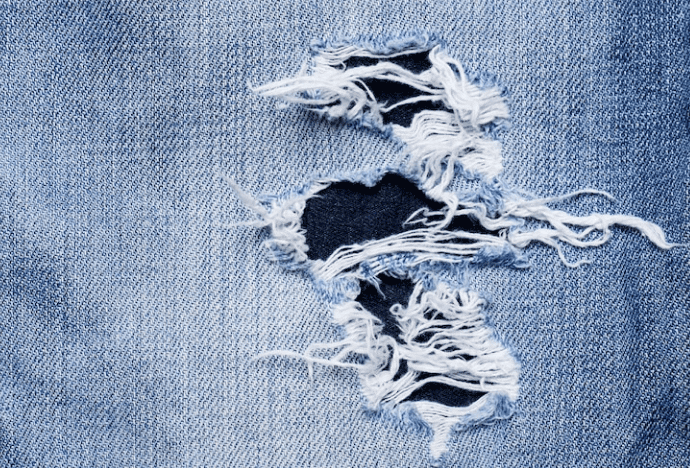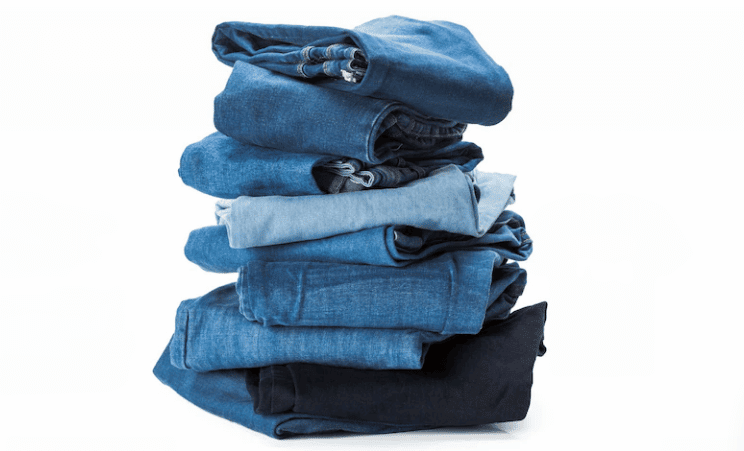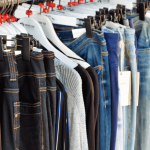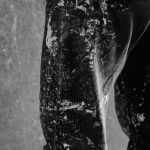Denim fabric is in fashion! Everyone has a denim fabric item in their closet. They are comfortable and at the same time have a robust appearance. It is therefore not surprising that this material is also one of the most popular in work uniforms for cooks and waiters. Denim fabric is a very universal type of fabric since it is the most sold and used by almost everyone. Denim fabric is such a versatile fabric to the point that with it you can make any garment you like, be it jeans, jackets, dresses, shirts, among others, this is where the difference between the term “denim fabric” lies with the term “denim” then, the first talks about the fabric as such (the raw material) while the second refers to a garment already made (the final product). Very little do we wonder what the denim fabric development process is like and then go on to make jeans, for example, which is the pants that are not needed in the wardrobe of both women and men due to their indisputable attractive charm that goes according to each trend that comes out being able to convey an image of elegance, youth, etc.
Below we show you the description of the different processes through which cotton passes, which becomes thread, and finally is transformed into denim fabric.
Fabrication process
- Everything begins with the opening and cleaning of the cotton, which is exposed when it is inserted into machines for that purpose. It is also subjected to aerial cleaning with specific machines for this and then goes to a mixer to mix the silos and distribute them. Subsequently, it goes to a last chamber to extract the dust from the cotton in order to prevent the company’s machinery from being damaged by the entry of dust.
- Now, once the cotton is completely purified, it goes to a machine in charge of discarding all the short fibers that can interfere with the process and preserve a certain neatness, forming a kind of cord that will be classified.
- Six of the cords undergo a stretching process to form a larger cord, always maintaining the same length and other characteristics such as weight with which they must be finicky.
- Six of the cords already passed through the first stretch must be passed through a second stretch. Again the tapes coming out of the second stretcher are deposited in the designated cans.
- At this stage, the cotton tapes pass to the open-end machine which makes the thread different from the system based on rotors and turbines. This machine performs the function of three machines: huller, continuous ring and cone. Once the machine has processed the cords, the actual cotton yarn comes out. The machine deposits the cotton on bobbins that are divided into bobbins for weft, warp and foot.
- The yarn is pulled from the bobbins to the warpers, these are ball type. At this stage the threads are joined, depending on the type of fabric that is going to be worked, a rope is made with certain threads.
- In the dyeing process, the balls arrive from the warp, which have an average of 400 threads, which means that each ball is approximately 20,000 meters long. Likewise, 24 balls complete a roll, which completes the batch that will simultaneously enter the dyeing area.
- Indigo is the dye that is used in the thread to be dyed, which goes through different processes that are listed below:• Descrude: the thread goes through a concentration of wetting agents, to eliminate impurities.
• Rinsing: eliminate the residues of the substances from the scouring.
• Dyeing Tubs: The process consists of passing the threads through each of the tubs, since the thread passes through the dye mixture and oxidizes in the environment, repeating this process several times, until the desired tone is achieved. wanted.
• Rinse: To remove excess dye.
• Smoothing: a softening and lubrication treatment is given to the thread, in order for the thread to have a better slip and smoothness.
• Drying: the yarn passes through 42 pre-drying drums.
• Coilers: the thread has finished going through the dyeing process, so a mechanical system deposits the ropes neatly in boats that have an approximate diameter of 1.5 meters and a height of 1.52. - Opening of the rope by means of tension to warp.
- The gumming is used to protect each of the threads with products such as starches and acrylic resins, with high, medium or low viscosities, depending on the thread number. It serves to protect the thread from the friction of the loom and give it greater resistance.
- Weaving Process. The joules coming from the gumming area are placed in the tying machines, in which thread by thread is tied, then the joules are placed in front of the weaving machines so that the cotton threads are woven and the denim fabric fabric is obtained, which they are also rolled up in joules.
- The termination, in this area is the sanforized, the final finish is given to the denim fabric, through a process consisting of heating it, cooling it and finally ironing it, this in order to achieve the texture, flexibility and hardness required to this type of fabric.

What are the operations that makeup step 12 of denim fabric manufacturing?
1. Wrinkled fabric
2. Brushed
3. Baked
4. Saturation
5. Vaporization
6. Smoothing
7. Pre-drying
8. Ironing
9. Wrinkled fabric
10. Inspection
11. Packaging
Conclusion
Now, like all the steps mentioned and explained above, the operations that are carried out in the termination process are also concentrated in a huge machine. Once the sanforizing process is completed in this same area, the cutting and packaging of the raw material is carried out to be sent as fabric to the finished product warehouse, which will be exported to different industries that are dedicated to making garments. As you may have noticed, manufacturing denim fabric is a long and meticulous process that must be carried out carefully to obtain the desired results according to the demand it has in terms of stiffness, elasticity, shades of blue, rips, etc.






